
A Cray supercomputer in the mid-1980s at the National Center for Supercomputer Applications, located at the University of Illinois, Urbana-Champaign.
In 1985/1986, the National Science Foundation (NSF) committed to “making impossible research possible” by funding five supercomputer centers:
- The National Center for Supercomputing Applications (NCSA) at the University of Illinois at Urbana-Champaign;
- The Pittsburgh Supercomputing Center (PSC) at Carnegie Mellon University and the University of Pittsburgh;
- The San Diego Supercomputer Center (SDSC) at the University of California, San Diego;
- The Cornell Theory Center at Cornell University (later to become the Cornell University Center for Advanced Computing);
- The John von Neumann Center at Princeton University (which was discontinued after 5 years).
These centers, which celebrated their 30th anniversaries this year, have served as cornerstones of the nation's high-performance computing and communications strategy. They helped push the limits of advanced computing hardware and software, even as they provided supercomputer access to a broad cross-section of academic researchers, enabling the study of everything from subatomic particles to the structure of the early universe.
In the intervening years, NSF has supported new centers and university programs — including the Texas Advanced Computing Center (TACC) at the University of Texas at Austin and the National Institute for Computational Sciences (NICS) at the University of Tennessee, Knoxville — as well as major programs at Indiana University, Purdue, Rice University and many other leading research institutions.
To make sure these centers and the resources they deployed were knit together into a unified whole, NSF also made major investments in programs like the Partnerships for Advanced Computational Infrastructure (1997-2004), TeraGrid (2005-2010) and most recently the Extreme Science and Engineering Discovery Environment (XSEDE) (2011-present).
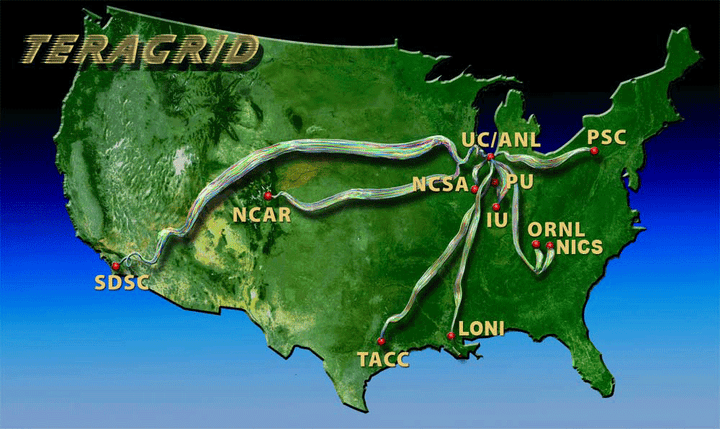
The NSF-supported collaboration, commonly called the TeraGrid, prototyped a widely shared, comprehensive cyberinfrastructure for academic research and education.
Whenever computational researchers outgrow the resources of their lab or home institutions, they can turn to the national cyberinfrastructure and access capabilities hundreds or even thousands of times more powerful than any single scientist has access to.
The cumulative impact of these investments has been enormous, enabling tens of thousands of researchers from hundreds of institutions to make discoveries that would otherwise have been out of reach.
1986: NSFNET goes online, connecting five NSF-supported supercomputing centers. Initially created to link researchers to the nation's NSF-funded supercomputing centers, it ultimately evolves into the Internet.
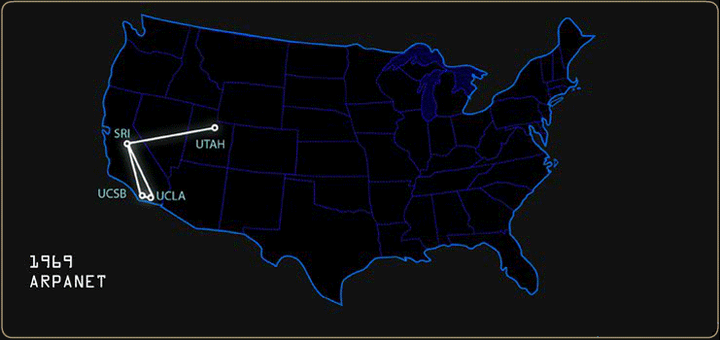
The first large-scale implementation of Internet technologies in a complex environment of independently operated networks, NSFNET was an intellectual leap and forced the Internet community to solve technical issues arising from the rapidly increasing number of computers.
1987: Alcoa uses PSC’s first supercomputer to improve the design of the lightweight aluminum can. (PSC)
1988: University of Illinois physicist David Ceperley leads development of quantum Monte Carlo methods, a key method for studying complex quantum systems. (NCSA)
1989: Charles Keeling et. al. construct 3-D model of the terrestrial carbon cycle, confirming the importance of fossil fuel combustion in loading the atmosphere with carbon dioxide. (SDSC)
1990: Early molecular dynamics study of EcoR1— the enzyme that launched genetic engineering — shows it bends DNA to a surprising degree. (PSC)
1991: 3D volumetric rendering unravels 2,000-year-old mummy's secrets. (NCSA)

3D volumetric rendering of an Egyptian mummy.
1992: SDSC launches Supercomputer Teacher Enhancement Program (STEP) — a forerunner to the award-winning TeacherTech program that has introduced hundreds of thousands of elementary school students to computational science. (SDSC)
1993: The world’s first freely available Web browser originates from NSF-funded research. Called “Mosaic,” it spurs a revolution in communications, business, education and entertainment that has had a trillion-dollar impact on the global economy. (NCSA)
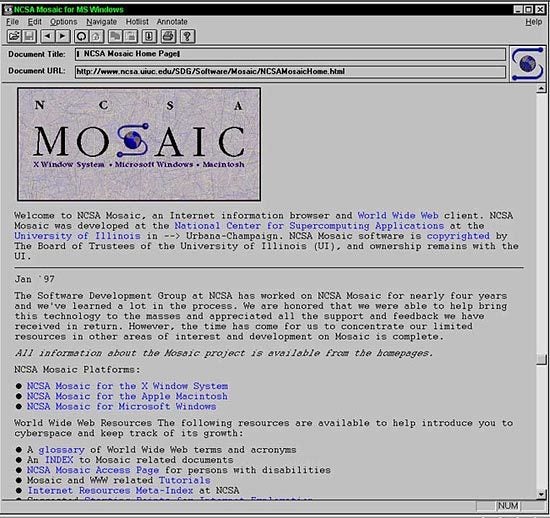
NCSA Mosaic 1.0, the first web browser to achieve popularity among the general public.
1994: First realistic 3D model of blood flow in human heart developed, leading to design of artificial heart valves. (PSC)
1995: On February 15, 1995, SDSC researchers collaborate with federal agents to track down the “most-wanted computer criminal in the United States.” (SDSC)
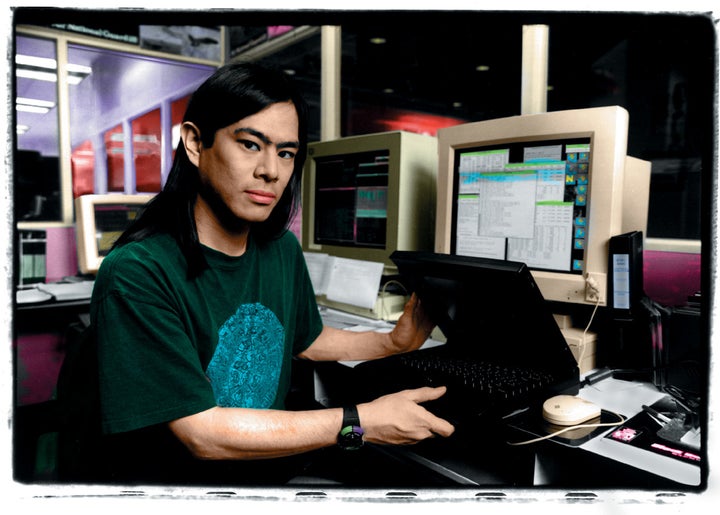
Computer security expert and SDSC senior research fellow, Tsutomu Shimomura, helps take down Kevin Mitnick, a fugitive computer criminal.
1996: Oscar-nominee Cosmic Voyage hits IMAX screens featuring visualizations by NCSA researchers. (NCSA)
1997: NSF’s Partnerships for Advanced Computational Infrastructure (PACI) initiative funds two massive programs, one led by NCSA and the other by SDSC, to develop a national-scale computational environment for multidisciplinary, collaborative problem solving. (NSF)
1998: First trans-pacific circuit launched connecting Pacific Rim research and education networks with their counterparts in the United States. Now in its third iteration, TransPAC3 is still in use today. (Indiana)
1999: Molecular dynamics simulations, led by J. Andrew McCammon at the University of California, San Diego, lead to the development of Isentress, an anti-AIDS drug marketed by Merck. (SDSC)
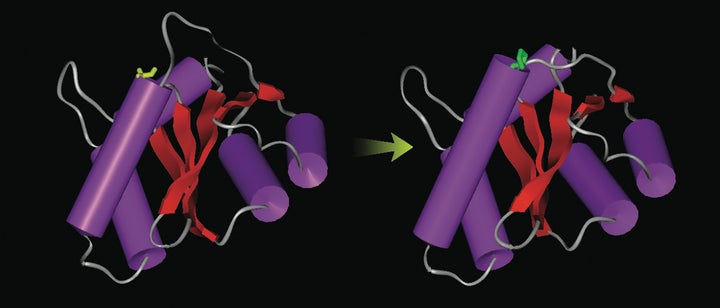
Molecular dynamics simulations, led by J. Andrew McCammon at UCSD, lead to the development of Isentress, an anti-AIDS drug marketed by Merck.
2000: Seminal study, cited by 2003 Nobel Prize recipient, shows how cell membrane protein aquaporin only allows water to pass through. (PSC)
2001: NSF awards $53 million to four U.S. research institutions — NCSA, SDSC, the University of Chicago Argonne National Laboratory and the Center for Advanced Computing Research (CACR) at Caltech — to build and deploy a distributed facility known as TeraGrid. (NSF)
2002: Caterpillar wins 2002 Private Sector Partnership Grand Challenge Award for their development of two visualization patents based on collaborations with NCSA. (NCSA)
2003: The Gravity Recovery and Climate Experiment (GRACE) uncovers changes in mass distribution of the Earth resulting from climate effects. (TACC)
2004: Earthquake scientists and computer scientists produce the most detailed simulation of what might happen during a major earthquake on the southern San Andreas Fault. (SDSC)
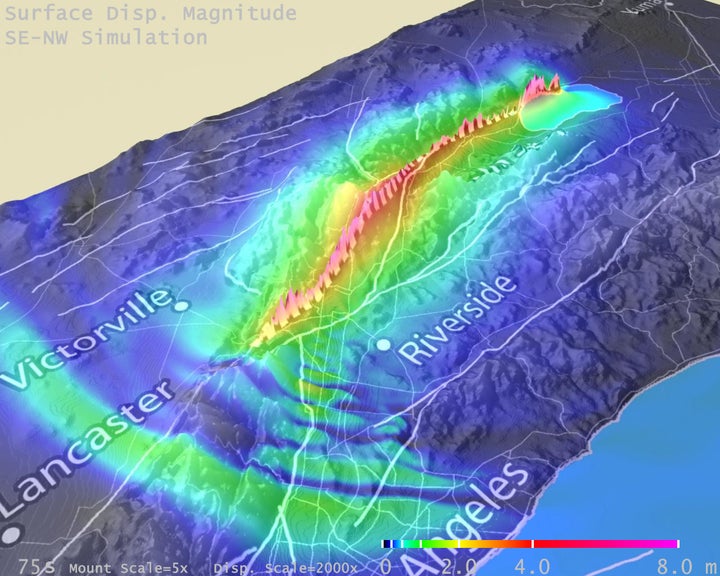
A visualization showing the displacement of the surface of California along the San Andreas fault based on a magnitude 7.7 earthquake.
2005: With five-year, $150 million award from NSF, TeraGrid launches, heralding a new era for scientific computing. (NSF)
2006: Team led by University of Illinois researcher Klaus Schulten simulates an entire life form for the first time. (NCSA)
2007: Astrophysicist Volker Bromm and his team model the first billion years of the universe, shedding light on the cosmic past and future. (TACC)
2008: During Hurricane Ike, researchers use the Ranger supercomputer to develop storm surge forecasts and safeguard coastal communities. (TACC)
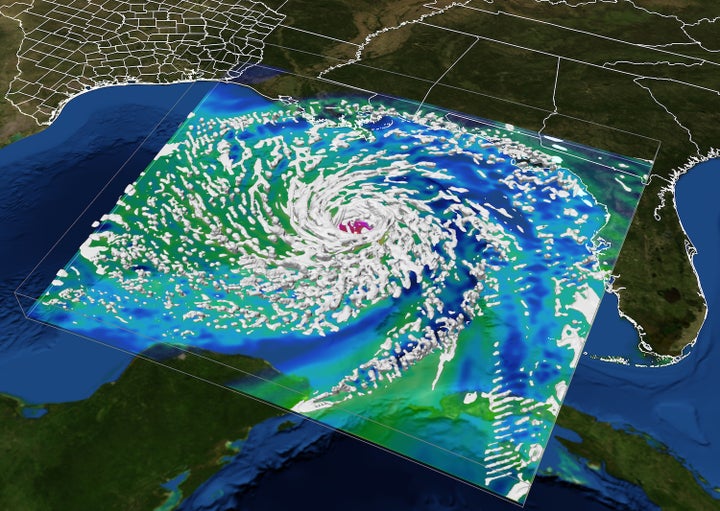
A visualization of Hurricane Ike shows the storm developing in the Gulf of Mexico and making landfall at the Texas coast.
2009: Researchers use advanced computing to show how individual social security numbers can be guessed from public information on the Web. (PSC)
2010: Researchers aid oil spill containment effort after Deep Water Horizon explosion using satellite and supercomputing technologies. (TACC, LONI)
2011: Extreme Science and Engineering Discovery Environment (XSEDE) awarded $121 million by NSF to bring advanced cyberinfrastructure, digital services and expertise to the nation's scientists and engineers. (NSF)
2012: University of Illinois researchers use PSC systems to show how large-scale traders used small stock purchases to game the system; discovery leads to rule changes in the NYSE and NASDAQ exchanges. (PSC)
2013: 3D image data enables University of South Carolina researchers to create patient-specific tissue structures. (NICS)
2014: A widely published global genome study using XSEDE resources and expertise shows how avian lineages diverged after the extinction of dinosaurs. (SDSC, NICS, TACC)
2015: Wake Forest researchers publish virtual crash test study, helping auto manufacturers design safer vehicles and restraint systems. (PSC)

Simulations on the Blacklight system at PSC provided new insight into crash injuries, enabling better protections.
2016: XSEDE resources from TACC and SDSC help confirm discovery of gravitational waves by Laser Interferometer Gravitational-Wave Observatory (LIGO) detectors.
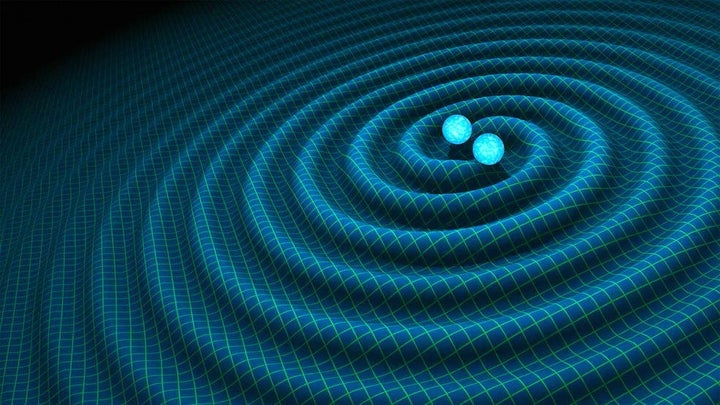
An artist's impression of gravitational waves generated by binary neutron stars, discovered by LIGO in 2016. Supercomputers helped confirm the discovery.